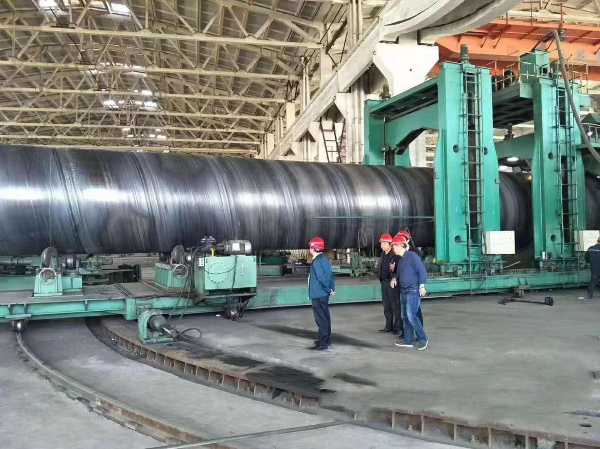How are spiral steel pipes welded?
Spiral pipes are also called spiral steel pipes or spiral welded steel pipes. They are made by rolling low carbon structural steel or low alloy structural steel strips into pipe blanks at a certain spiral angle (called forming angle), and then welding the pipe seams. , which can produce large-diameter steel pipes from narrow strips of steel, and is widely used in construction, transportation, petroleum, chemical and other industries. So, how are spiral steel pipes welded? Are there any precautions? Let’s take a look at the
carbon steel pipe manufacturers.
The spiral pipe adopts double-sided submerged arc welding.
(1) Raw materials include steel strip coil, welding wire and flux. They must undergo strict physical and chemical inspections before being put into use.
(2) The head and tail of the steel strip are butt-jointed using single-wire or double-wire submerged arc welding. After being rolled into a steel pipe, automatic submerged arc welding is used for repair welding.
(3) Before forming, the strip steel is leveled, trimmed, planed, surface cleaned, transported and pre-bent.
(4) Electric contact pressure gauges are used to control the pressure of the cylinders on both sides of the conveyor to ensure smooth transportation of the strip.
(5) Adopt external control or internal control roller forming.
(6) A weld gap control device is used to ensure that the weld gap meets the welding requirements. The pipe diameter, offset amount and weld gap are all strictly controlled.
(7) Both internal and external welding use American Lincoln electric welding machines for single-wire or double-wire submerged arc welding to obtain stable welding quality.

(8) All completed welds have been inspected by an online continuous ultrasonic automatic flaw detector, ensuring 100% non-destructive testing coverage of spiral welds. If there is a defect, it will automatically alarm and spray mark, so that production workers can adjust the process parameters at any time to eliminate defects in time.
(9) Use an air plasma cutting machine to cut the steel pipe into individual pieces.
(10) After cutting into individual steel pipes, each batch of steel pipes must undergo a strict first inspection system to check the mechanical properties, chemical composition, fusion status of the welds, the surface quality of the steel pipes, and non-destructive testing to ensure that the pipe making process is qualified. Only then can it be officially put into production.
(11) The areas with continuous sonic flaw detection marks on the welds will undergo manual ultrasonic and X-ray re-examination. If there are indeed defects, they will be repaired and then undergo non-destructive inspection again until it is confirmed that the defects have been eliminated.
(12) The pipes where the strip butt welds and the T-shaped joints intersecting the spiral welds are located must be inspected by X-ray television or film.
(13) Each steel pipe has undergone a hydrostatic pressure test, and the pressure is radially sealed. The test pressure and time are strictly controlled by the steel pipe water pressure microcomputer detection device. Test parameters are automatically printed and recorded.
(14) The pipe end is machined to accurately control the end face verticality, bevel angle and blunt edge.
Things to note when welding spiral steel pipes:
1. Make sure the welding surface is clean, which is crucial to ensuring welding quality. Before welding, grease, dust and other substances on the surface of the steel pipe must be fully removed to ensure that the two welds are bonded.
2. Control the welding temperature to avoid too high or too low temperature. Generally speaking, the welding temperature should be controlled between 800°C and 1100°C to ensure the quality and strength of the weld.
3. Design a reasonable welding process. Because spiral steel pipes are usually relatively large, durable welding joints are required. Therefore, engineers must develop welding processes that comply with specifications for specific situations.
4. Establish a complete quality control mechanism. According to different welding quality and standards, corresponding inspection measures should be set up to ensure the quality and durability of spiral steel pipe welding.
Go here to learn more: Matters needing attention when purchasing welded steel pipes


